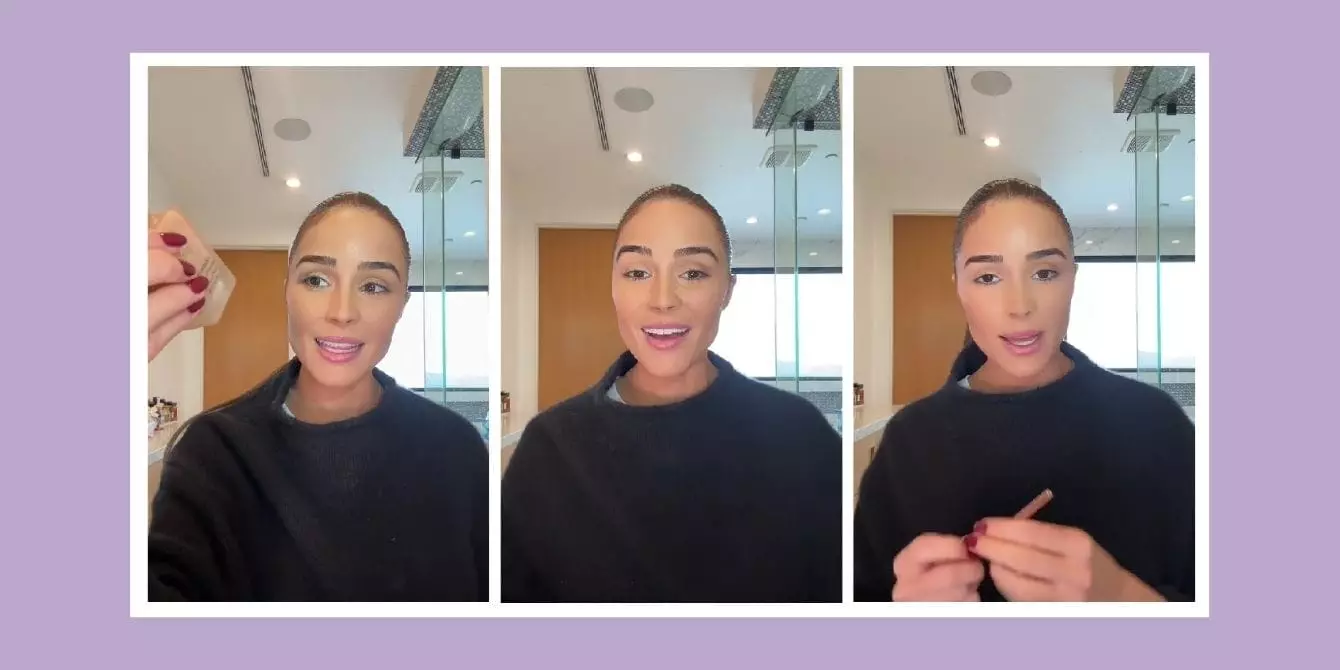In a world inundated with polished social media portrayals, Olivia Culpo’s candid sharing of her tumultuous pregnancy journey serves as a powerful reminder of the often-hidden struggles many expectant mothers face. As she recently revealed, her road to motherhood hasn’t been the smooth ride one might expect from a celebrity. Instead, her openness about health complications, from pneumonia to a subchorionic hematoma, paints a stark contrast to the picture-perfect narratives typically showcased in public. The raw authenticity nature of her TikTok update has resonated deeply, resonating with mothers everywhere who may feel isolated in their experiences.
The glamor associated with celebrity lifestyles often glosses over the grit of everyday realities. Culpo, in her vulnerability, unapologetically dismantles the myth that pregnancy is a continuous flow of joy and beauty. The truth is pregnant women can face unforeseen health issues that can transform this life event into an emotionally taxing ordeal. Such honest revelations can help demystify pregnancy, motivating others to feel empowered rather than confined by expectations.
Facing Health Complications with Strength
Culpo’s account shines a light on the frightening health complications she faced early in her pregnancy. Bed rest for an extended period may sound relaxing, but the reality is far less enviable. At nine weeks pregnant, she grapples with the fear and anxiety that accompany serious medical diagnoses, especially those that are vaguely understood by the general public.
The fact that she faced pneumonia preceding her pregnancy complications adds layers of challenges few factor in when contemplating motherhood. Her story serves as a crucial lesson; pregnancy is not just about growing a baby—it’s also about navigating health hurdles and emotional windfalls. Recognizing the risks, such as subchorionic hematoma, allows women to be more aware and prepared for their own pregnancies, potentially fostering earlier intervention and support if complications arise.
The Power of Community and Shared Experience
The pregnancy journey can often leave women feeling isolated; however, Culpo’s heartfelt message aims to create a community of understanding and solidarity. In her video, she emphasizes that her experiences—filled with intense bleeding, anxiety, and uncertainty—are not characterized by the eventual baby bliss so often portrayed. Instead of masking fears, she encourages open dialogue, normalizing situations that many women face yet seldom discuss.
Her emotional appeal to other expecting mothers is a key takeaway; acknowledging challenges fosters empathy and connection. When mothers document their realities, they cultivate a network of support, vital for navigating the ups and downs inherent in pregnancy. This shared vulnerability even extends to acknowledging difficult emotions, such as fear and isolation, which reminds mothers struggling with similar issues that they are not alone in their experiences.
A Holistic View of Motherhood
Culpo’s transparency opens an avenue to reconsider the conventional views of motherhood, embracing a more holistic perspective. Each pregnancy is unique, filled with its own trials and victories—some more daunting than others. The narrative that focuses solely on the glowing mother-to-be fails to encapsulate the entirety of this life-changing journey.
In a society where pregnancy is often scripted into an idealized story, Culpo’s truth resonates as a powerful act of defiance. It’s a call for authenticity in the motherhood narrative that champions the real experiences over those filtered through social media’s lens. This perspective not only serves mothers by validating their experiences, but it also encourages society to embrace an understanding that is both compassionate and appreciative of the complexities of motherhood.
Healing Through Vulnerability
Ultimately, Olivia Culpo’s courage to share her trials is a gift to women everywhere. By tearing down the facade of the perfect pregnancy experience, she invites others to embrace their realities—challenging or otherwise. The emotional vulnerability she exhibits is not a sign of weakness but a profound strength, which can pave the way for a more inclusive dialogue surrounding the realities of pregnancy. Such disclosures can empower mothers, reassuring them that their feelings of uncertainty are shared and valid.
Culpo’s journey, marked by resilience and vulnerability, continues to inspire and engage countless women navigating their paths to motherhood. We stand with her and every woman tackling these challenges, as we recognize that the messy, tumultuous journey of pregnancy is ultimately where the most beautiful stories are born.

